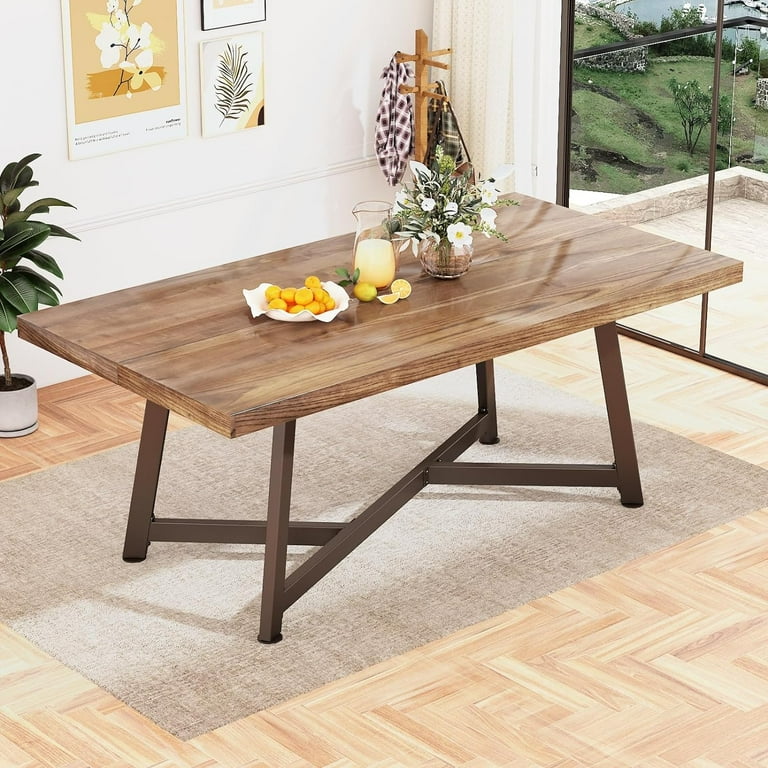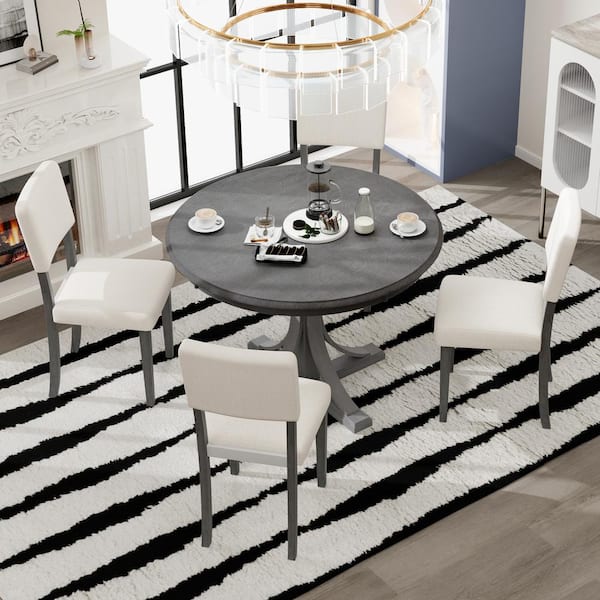Tips for Installing Dining Room Table Legs for a Modern Look
Tips for Installing Dining Room Table Legs for a Modern Look
Blog Article
From Conventional to Modern: Locate the Suitable Dining-room Table Legs for Your Design
While classic styles such as cabriole and turned legs stimulate a feeling of classic elegance, contemporary designs like hairpin and geometric alternatives provide a chance for striking visual interest. As you consider these components, the inquiry stays: just how can you seamlessly integrate these diverse leg styles to produce an unified dining experience?
Understanding Table Leg Styles
The selection of dining area table leg designs can significantly influence both the aesthetic appeals and performance of the room. Each leg design adds special sensible attributes and visual components, dealing with varied design choices and usage requirements. Recognizing these styles is critical for choosing the best eating table that aligns with your total interior decoration vision.
For circumstances, tapered legs use a clean, timeless look that can boost a space's style, while stand bases supply security and optimize legroom, making them optimal for smaller rooms. Hairpin legs, a hallmark of mid-century modern design, introduce an industrial panache, permitting an airy, open feeling. Trestle legs stimulate rustic charm, offering durable assistance and a sense of eternity.
Additionally, the selection of products plays a considerable role. Wood legs can bring heat and appearance, whereas metal options commonly communicate a sleek, modern vibe. Ultimately, comprehending table leg styles is vital for creating a cohesive dining location that shows individual style while ensuring practicality and comfort. By thoughtfully thinking about these components, you can improve both the functional and visual allure of your dining space.
Conventional Table Leg Options
When picking dining room table legs, traditional choices typically embody ageless sophistication and workmanship. These designs mirror an abundant heritage and a dedication to high quality, making them ideal for those that appreciate traditional aesthetic appeals.
One of one of the most renowned standard leg designs is the cabriole leg, defined by its elegant curved shape. This style commonly features decorative makings and is most frequently discovered in Queen Anne and Chippendale furnishings. One more popular alternative is the turned leg, which flaunts a series of smooth, rounded forms that give a classic appearance while maintaining stability.
In addition, the straight leg, while straightforward, provides a durable and unadorned framework that can mix effortlessly with a variety of tabletop styles. For those attracted to ornate outlining, claw-and-ball feet legs stimulate a feeling of splendour and can work as a sensational prime focus in any kind of dining space.
Lastly, stand bases, although not strictly legs, provide an alternate conventional alternative that enables sufficient legroom and can be perfectly sculpted. Each of these typical leg designs adds to the general ambiance of an eating space, marrying function with visual charm.

Modern Table Leg Designs
Modern table leg layouts supply a varied variety of styles that emphasize ingenious materials and tidy lines. These designs usually focus on performance while functioning as striking prime focus within an eating area. Minimalist looks are widespread, with legs crafted from products such as steel, glass, and engineered wood, which contribute to a modern and airy feel.
One preferred design is the barrette leg, identified by its slim, conical framework that supplies security without frustrating the tabletop (dining room table legs). This style is often located in mid-century modern furniture and can effortlessly complement numerous table shapes. An additional fad is the use of geometric shapes, where legs may handle unbalanced or angular types, including visual interest and a touch of creativity

Mixing Designs for One-of-a-kind Areas
Commonly, home owners look for to produce special dining spaces that mirror their personal design by mixing different style aspects. This strategy try this web-site permits for the incorporation of varied aesthetics, resulting in an unified yet distinctive setting. As an example, combining a rustic wooden table with sleek, modern steel legs can create a distinctive comparison that elevates the space's general appeal.
Additionally, integrating vintage table legs with modern table tops can evoke a feeling of background while maintaining a modern perceptiveness. Such mixes not only showcase private taste but also motivate creative thinking, allowing homeowners to curate a room that really feels both personal and welcoming.
Color plays an essential function in this blending process; choosing table legs that match or comparison with the existing color system can improve aesthetic interest. For instance, whitewashed legs can soften the boldness of a dark table surface area, producing a well balanced visual.
Tips for Choosing the Right Legs
Choosing the right table legs is crucial for attaining both capability and aesthetic appeal in your eating room. Begin by taking into consideration the total design of your area. Standard settings take advantage of legs that feature intricate carvings or transformed layouts, while contemporary rooms may call for streamlined, minimalist styles.
Following, examine the elevation and security of the legs. dining room table legs. Basic table vary between 28 to 30 inches in height, so make certain the legs complement this dimension for comfort. Additionally, durable products, such as wood or metal, can boost stability and durability
Review the leg form also-- choices include directly, tapered, or pedestal layouts. Straight legs provide a timeless appearance, while tapered legs can add a touch of beauty. Pedestal bases provide adequate legroom and are excellent for smaller sized rooms.
Conclusion
In recap, picking the excellent dining-room table legs calls for mindful consideration of both traditional and modern-day styles. Conventional options such as cabriole and turned legs use ageless sophistication, while modern-day styles like hairpin and geometric forms offer a modern touch. By harmonizing leg design, height, and product with the overall decor, a natural and inviting ambience can be achieved. Ultimately, the picked table legs ought to mirror the desired aesthetic, boosting the news dining experience within the space.
The selection of eating room table leg designs can dramatically affect both the visual appeals and capability of the room. Ultimately, understanding table leg styles is necessary for producing a natural dining area that mirrors individual style while making sure practicality and comfort.One of the most renowned traditional leg styles is the cabriole leg, characterized by its stylish curved form. try this out Straight legs supply a classic look, while conical legs can include a touch of style.In summary, selecting the perfect eating space table legs calls for careful consideration of both traditional and contemporary designs.
Report this page